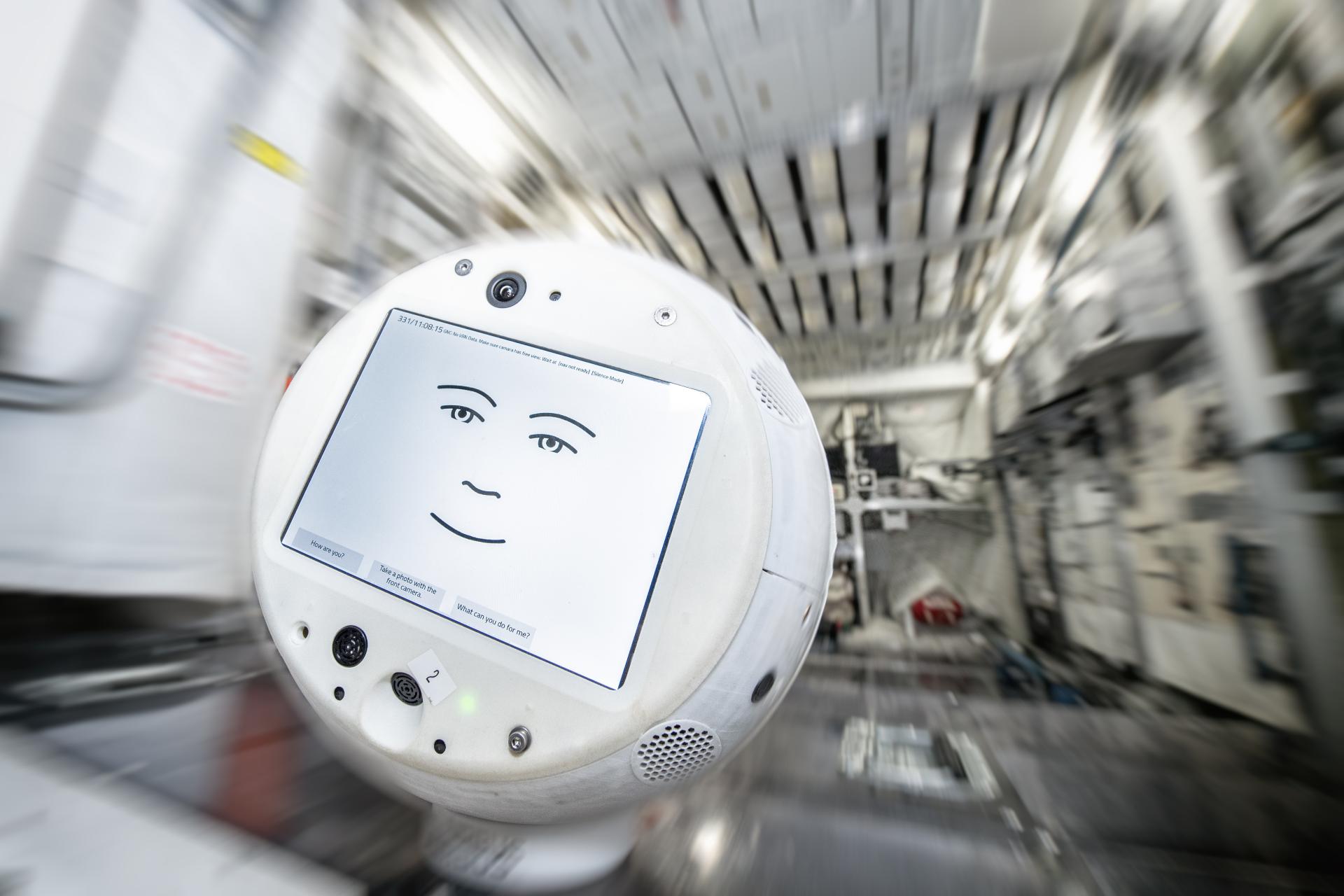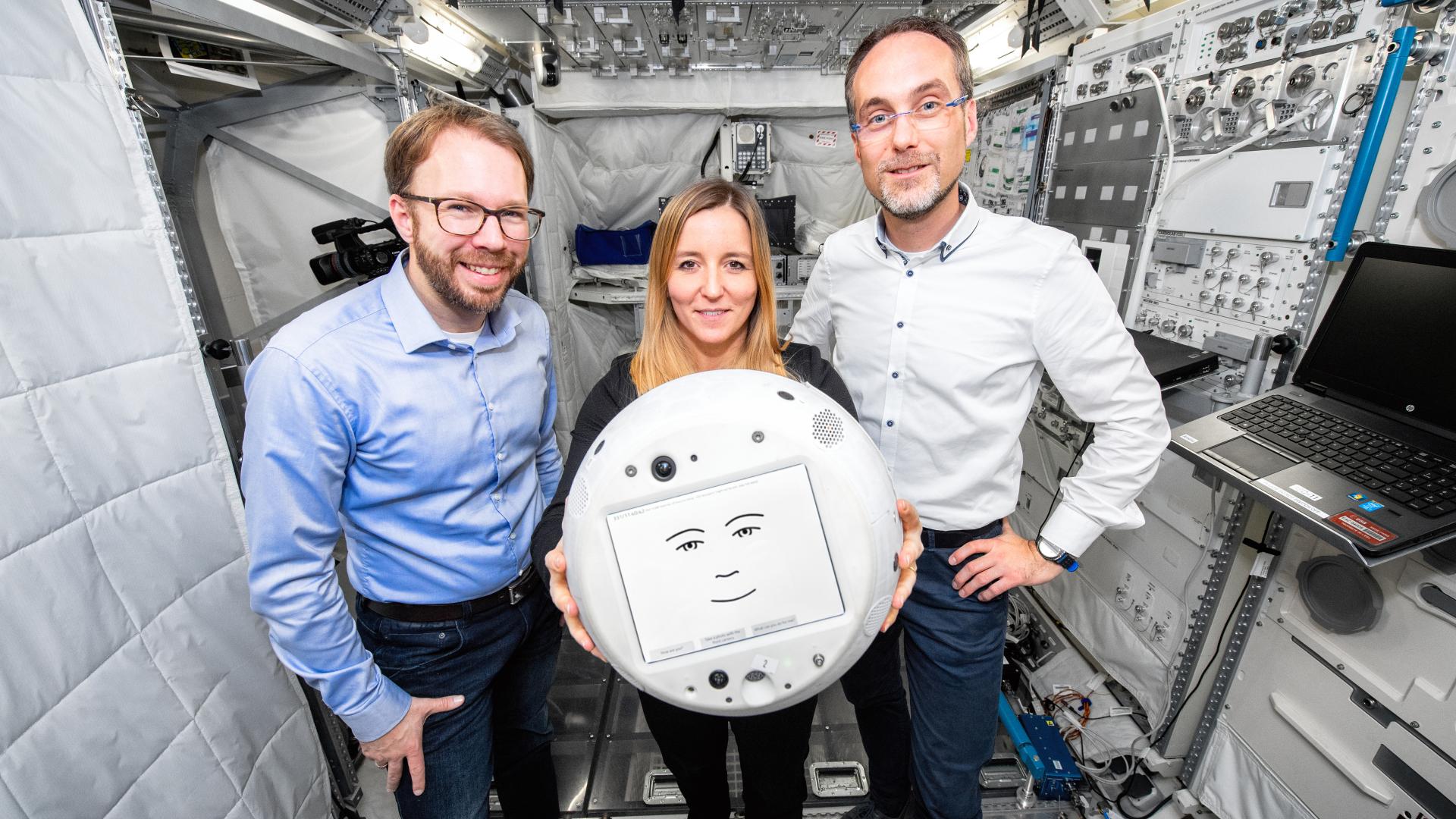
Another robot with artificial intelligence is headed for the International Space Station (ISS).
The astronaut assistant known as CIMON 2 just launched for the orbiting lab aboard SpaceX's robotic Dragon cargo capsule, which lifted off today (Dec. 5) from Cape Canaveral Air Force Station in Florida.
CIMON 2 is following in the footsteps of the original CIMON (Crew Interactive Mobile Companion), which reached the ISS in the summer of 2018, also aboard a Dragon. Both robots were developed by the European aerospace company Airbus on behalf of the German space agency, DLR, and employ IBM's Watson system as their AI.
Related: Real-Life 'Replicants': 6 Humanoid Robots Used for Space Exploration
CIMON 2 features some significant upgrades over its predecessor, which was a technology demonstration designed to show how humans and robots can collaborate in the space environment. For example, the newer robot has been updated with the "Watson Tone Analyzer" from the IBM Cloud, giving CIMON 2 the ability to assess and react to astronauts' emotions.
"With this update, CIMON has transformed from a scientific assistant to an empathetic conversational partner," IBM representatives wrote in a statement. "Specifically, CIMON 2 has more sensitive microphones and an advanced sense of orientation. These AI capabilities and the stability of the complex software applications have also been significantly improved in the new CIMON 2."

This robot retains the core capabilities of the first CIMON, which was roughly spherical, weighed about 11 lbs. (5 kilograms) and had a simple, cartoony face. CIMON was also mobile; it could jet around the ISS by sucking in air and blowing it out strategically via a system of tubes.
Get the Space.com Newsletter
Breaking space news, the latest updates on rocket launches, skywatching events and more!
The original CIMON was "tailored to" European Space Agency astronaut Alexander Gerst and helped the spaceflyer perform several different experiments in Earth orbit. Such work, and that of CIMON 2, could help lay the foundation for a powerful partnership between humanity and machine in the final frontier, the robot's developers have said.
"For us, this is a piece of the future of human spaceflight," Christian Karrasch, CIMON project leader at DLR, said last year, shortly before the launch of the original CIMON.
"If you go out to the moon or to Mars, you cannot take all mankind and engineers with you," Karrasch added. "So, the astronauts, they will be on their own. But with an artificial intelligence, you have instantly all the knowledge of mankind."
- Why Does Artificial Intelligence Scare Us So Much?
- This Flying Space Droid Wants to Make Friends with Astronauts
- International Space Station: Facts, History & Tracking
Mike Wall's book about the search for alien life, "Out There" (Grand Central Publishing, 2018; illustrated by Karl Tate), is out now. Follow him on Twitter @michaeldwall. Follow us on Twitter @Spacedotcom or Facebook.

Join our Space Forums to keep talking space on the latest missions, night sky and more! And if you have a news tip, correction or comment, let us know at: community@space.com.

Michael Wall is a Senior Space Writer with Space.com and joined the team in 2010. He primarily covers exoplanets, spaceflight and military space, but has been known to dabble in the space art beat. His book about the search for alien life, "Out There," was published on Nov. 13, 2018. Before becoming a science writer, Michael worked as a herpetologist and wildlife biologist. He has a Ph.D. in evolutionary biology from the University of Sydney, Australia, a bachelor's degree from the University of Arizona, and a graduate certificate in science writing from the University of California, Santa Cruz. To find out what his latest project is, you can follow Michael on Twitter.
-
FSimkin Artificial yes, emotionally intelligent no. Please stop the hype it hurts serious work in the AI field.Reply









